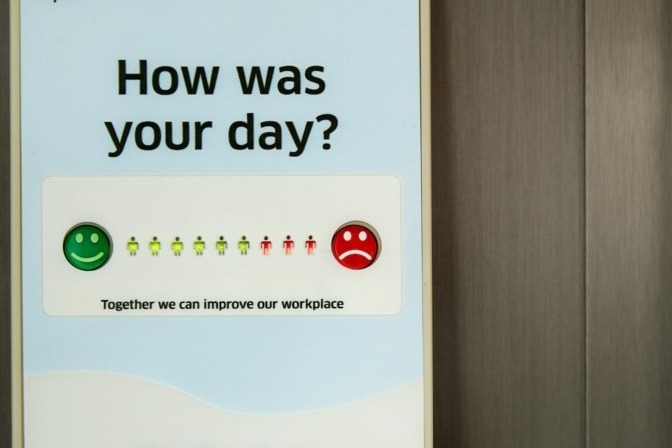Are you tired of receiving complaints from your cold email campaigns? It’s time to take control of the situation and manage those complaints effectively. As a marketer, it’s crucial to understand the importance of managing email complaints in cold email campaigns. Not only does it affect your reputation and image, but it can also impact your future campaigns.
In this article, we’ll explore how to identify the root cause of email complaints, respond professionally to them, and prevent similar issues from happening in the future. By utilizing feedback to improve your campaign and maintaining a positive image, you’ll be able to build trust with your audience and increase conversions. So let’s dive into the world of managing email complaints in cold email campaigns and take charge of our marketing strategies.
Understanding the Importance of Managing Email Complaints in Cold Email Campaigns
You know how frustrating it is when you receive an email that feels irrelevant or spammy? That’s why understanding the importance of keeping your audience engaged and interested in your message is crucial for successful outreach. Email complaints can escalate quickly, leading to unhappy customers and a damaged reputation. By managing these complaints properly, you can improve customer retention and prevent future issues.
One key to managing email complaints is identifying the root cause of the issue. Is your message too salesy or lacking personalization? Are you sending too many emails too frequently? Understanding what’s causing the problem will help you make necessary adjustments to prevent similar issues in the future. Additionally, responding promptly and professionally to any complaints can go a long way in showing customers that their concerns are being heard and addressed.
Overall, taking steps to manage email complaints can have a significant impact on the success of your cold email campaign. By addressing customer concerns quickly and effectively, you’ll not only improve customer retention but also minimize damage to your brand’s reputation. In the next section, we’ll dive deeper into strategies for identifying the root cause of these complaints so that you can take action before things get out of hand.

Identifying the Root Cause of Email Complaints
Figuring out why people complain about your emails is key to improving your outreach efforts. One of the main causes of email complaints is a lack of proper email etiquette. This includes sending unsolicited emails, using misleading subject lines, and not providing an easy way for recipients to unsubscribe.
Another root cause of email complaints is the content of the message itself. If your email is too salesy or pushy, it can turn off potential customers and lead them to mark your message as spam or file a complaint. It’s important to strike a balance between being persuasive and respectful in your messaging.
Lastly, technical issues with your email campaigns can also lead to complaints. Make sure that you’re sending emails from a reputable sender address with valid contact information, and that you’re using a reliable email service provider that handles bouncebacks and unsubscribes properly. By addressing these root causes of email complaints, you’ll be able to improve your cold outreach efforts and build more positive relationships with potential customers.
As you work on identifying the root cause(s) behind any complaints received by recipients from previous cold campaigns, it’s important that you keep in mind how crucial complaint resolution is when managing an effective campaign. In order for this process to be successful, it requires responding professionally even amidst negative feedback received from prospects or clients who may have felt offended or ignored by some aspect of the initial communication they received from you.
Responding to Complaints Professionally
Responding to complaints in a professional manner can make or break your relationship with potential customers, so it’s important to handle negative feedback with care and empathy. When you receive an email complaint, the first thing you should do is apologize sincerely. Acknowledge the customer’s frustration and empathize with their situation. Let them know that you understand how they feel and that you’re sorry for any inconvenience caused.
Next, offer solutions to address their concerns. Provide options that could help resolve the issue at hand. Be specific about what actions you will take to rectify the problem and ensure that it won’t happen again in the future. This shows that you take their complaints seriously and are willing to go above and beyond to make things right.
Remember, responding professionally doesn’t just end with one email exchange. Follow up with the customer after implementing your solutions to see if they were satisfied with your response. This gesture demonstrates your commitment to providing excellent customer service and may even turn a dissatisfied customer into a loyal one.
By apologizing sincerely and offering solutions, you show customers that their input matters and that you value their business. However, preventing similar complaints in the future is equally vital in maintaining positive relationships with potential customers. In order to avoid repeating mistakes, it’s essential to analyze feedback from past email campaigns carefully – a topic we’ll be exploring next: ‘Preventing Similar Complaints in Future Campaigns.’
Preventing Similar Complaints in the Future
Now it’s time to explore how to ensure that past mistakes don’t repeat themselves, maintaining positive customer relationships and avoiding negative feedback in the future. Improving targeting is one way to avoid similar complaints in the future. Make sure you are sending your cold emails to a specific audience who will be interested in your product or service. This can be achieved by analyzing data and conducting research on potential client demographics.
Adjusting messaging is another important step towards preventing future email complaints. Ensure your message is clear and concise while highlighting the benefits of your product or service. Avoid using pushy language and instead focus on building a relationship with potential clients based on trust and respect. Personalize each email as much as possible, including addressing the recipient by name.
By improving targeting and adjusting messaging, you can prevent similar email complaints from occurring in the future while maintaining positive customer relationships. However, if you do receive negative feedback, utilize it as an opportunity to improve your email campaign even further. The next section will explore how utilizing feedback can help improve your overall approach to cold emailing.

Utilizing Feedback to Improve the Email Campaign
Improving your approach to cold emailing is crucial for maintaining positive customer relationships and avoiding negative feedback, so let’s explore how utilizing feedback can help you achieve this. Analyzing feedback trends is the first step towards making changes that will improve your email campaign. Take a look at what customers are saying about your emails – Are they too long? Too short? Do they lack personalization? Identifying patterns in feedback will allow you to make informed decisions about what changes should be made.
Once you have analyzed the feedback, it’s time to start implementing changes based on that feedback. If you notice that many customers are complaining about the length of your emails, try making them shorter and more concise. Alternatively, if customers are complaining that your emails lack personalization, try adding more personalized touches like addressing them by their first name or mentioning something specific about their company in the email. By taking this feedback into account and making changes accordingly, you’ll be able to better engage with customers and avoid future complaints.
Incorporating customer feedback into your email campaign is an ongoing process that requires constant attention and adjustment. Keep analyzing trends in customer complaints and continue making improvements as necessary. By doing so, you’ll not only be able to avoid negative feedback but also maintain a positive image and reputation with potential customers who may come across your emails in the future.
Maintaining a Positive Image and Reputation
To maintain a positive image and reputation, it’s important for you to consistently prioritize customer satisfaction by identifying their needs and preferences in your communication. Building rapport is crucial in cold email campaigns because it helps establish trust between you and your potential customers. By showing that you care about their concerns, they are more likely to respond positively to your emails.
One way to build rapport is by addressing any concerns or complaints they may have. It’s important to acknowledge their feedback and take steps towards resolving the issue. Even if you cannot fix the problem immediately, letting them know that their opinion matters can go a long way in maintaining a positive relationship with them.
In addition, always strive to provide value in your emails rather than just pushing sales pitches. By providing helpful information or tips related to your industry, you show that you are knowledgeable and genuinely interested in helping them rather than just trying to make a sale. This approach not only helps improve customer satisfaction but also sets you apart from competitors who may only focus on selling their product or service.
Conclusion
Congratulations! You have successfully learned how to manage email complaints in your cold email campaigns. By understanding the importance of addressing complaints and identifying their root cause, you can respond professionally and prevent similar issues from occurring in the future.
However, some may argue that responding to every complaint is a waste of time and resources. While it’s true that not every complaint needs an immediate response, ignoring them altogether can damage your reputation and lead to further issues down the line. It’s important to prioritize which complaints require attention based on their severity and impact on your campaign.
In conclusion, managing email complaints is crucial for maintaining a positive image and improving your cold email campaign. By utilizing feedback, responding professionally, and preventing similar issues in the future, you can ensure that your emails are well-received by potential customers. Remember to take all complaints seriously and use them as an opportunity for growth rather than a setback. Good luck!

